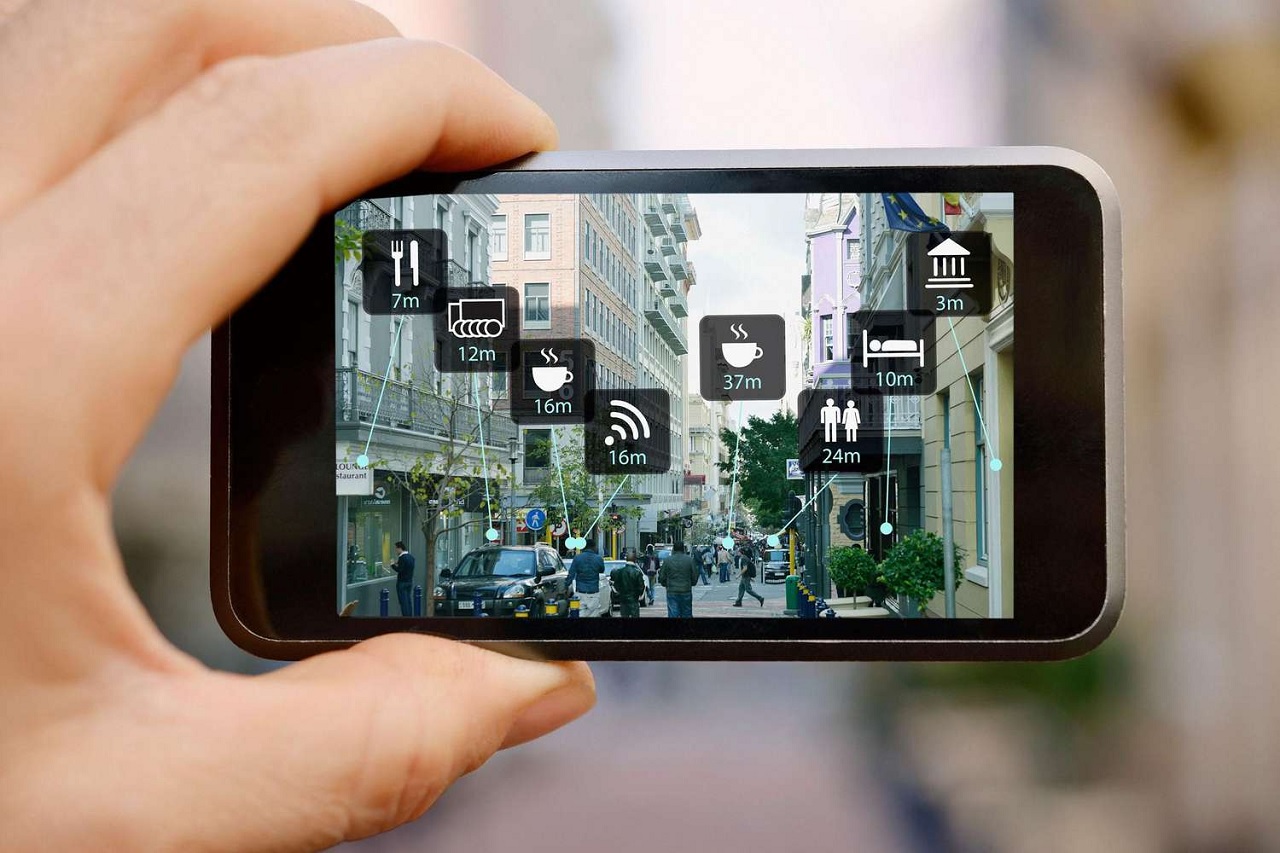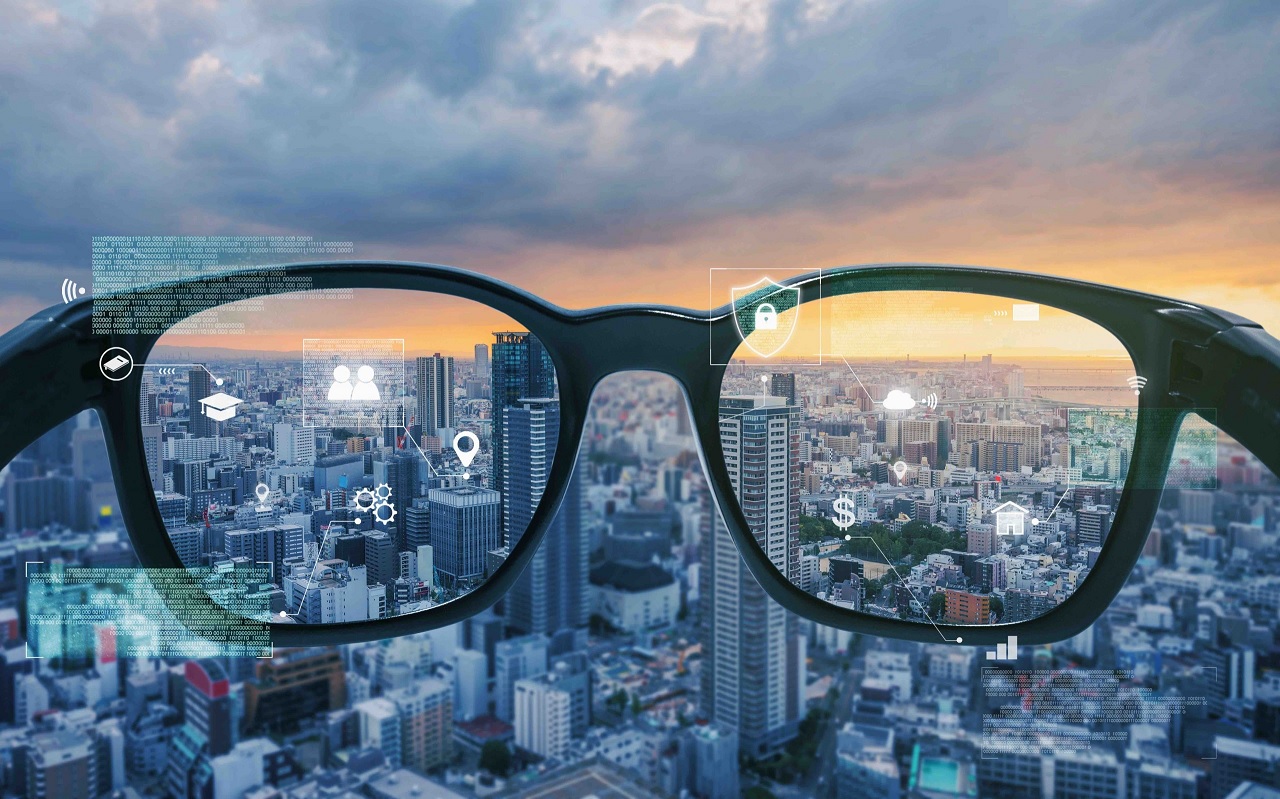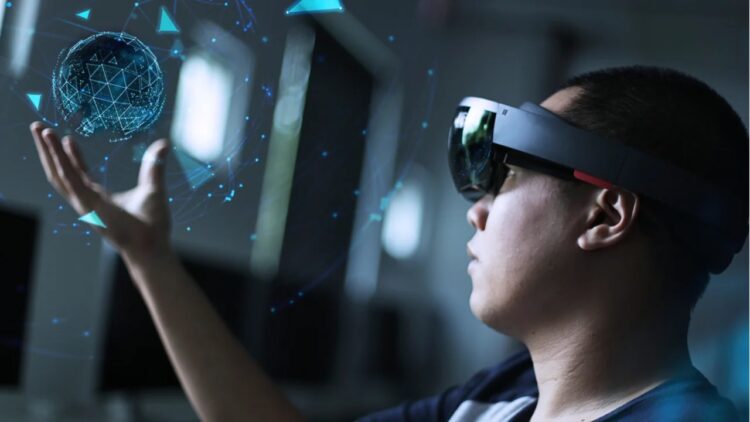Augmented reality (AR) has emerged as a transformative technology, revolutionizing the way we interact with the world around us. By seamlessly blending digital content with our physical environment, AR enhances our perception and opens up new possibilities across various industries.
This article explores the concept of augmented reality, its underlying technologies, and its wide-ranging applications. From entertainment and gaming to education, retail, healthcare, and beyond, AR is reshaping how we learn, shop, work, and even navigate.
Furthermore, this article delves into the challenges faced by AR and envisions the exciting future potential of this technology.
Understanding Augmented Reality

Augmented reality (AR) is a technology that merges digital information and virtual content with the real world, creating an enhanced perception and interaction with our surroundings. To delve deeper into understanding augmented reality, let’s explore the key components and underlying technologies that make AR possible:
Computer Vision:
Computer vision plays a crucial role in AR systems. It involves algorithms and techniques that enable devices to perceive and understand the visual environment. By analyzing the input from cameras and sensors, computer vision allows AR systems to detect and track objects, recognize markers or patterns, and understand the spatial layout of the surroundings.
Tracking and Localization:
Accurate tracking and localization are essential for AR experiences. AR systems use various methods, such as visual tracking, simultaneous localization and mapping (SLAM), and sensor fusion, to determine the user’s position and orientation relative to the environment. This tracking enables the proper alignment of virtual content with the real world.
Display Technologies:
AR content is presented to users through display technologies. Depending on the device used, AR experiences can be delivered through smartphones, tablets, smart glasses, or headsets. These devices employ different display technologies, including LCD, OLED, or transparent displays, to overlay virtual elements onto the user’s view of the real world.
Sensors and Input:
AR devices incorporate a range of sensors to gather data about the user and the environment. These sensors may include cameras, accelerometers, gyroscopes, depth sensors, and GPS. By collecting real-time data, AR systems can accurately overlay digital content and respond to user interactions, such as gestures, voice commands, or touch inputs.
Content Creation and Rendering:
Creating AR content involves designing and developing digital assets that can be seamlessly integrated into the real world. Content creators utilize computer graphics, 3D modeling, and animation tools to generate virtual objects, characters, or environments. Rendering techniques are employed to ensure that virtual content appears realistic and aligns with the physical environment, accounting for lighting, shadows, and depth cues.
Software Development:
Augmented reality applications require software development to implement the underlying algorithms, tracking systems, and user interfaces. AR development frameworks and software development kits (SDKs) provide tools and libraries to facilitate the creation of AR applications for different platforms. Developers use programming languages such as C++, C#, Java, or Swift to build AR experiences.
Connectivity and Integration:
AR experiences can benefit from connectivity and integration with other technologies. For example, cloud computing can offload complex computational tasks, allowing AR devices to access vast amounts of data and provide more advanced features. Integration with other technologies like Internet of Things (IoT) devices or sensors can enhance the contextual understanding and interaction capabilities of AR systems.
Understanding these key components and technologies helps to grasp the complexity and underlying mechanisms of augmented reality. By combining computer vision, tracking, display technologies, sensors, content creation, and software development, AR systems can create compelling and immersive experiences that blend the virtual and real worlds, enabling us to interact with digital content in new and meaningful ways.
Applications of Augmented Reality

AR finds applications across numerous sectors, transforming industries and creating new opportunities for innovation. Here are some key areas where augmented reality is making a significant impact:
Entertainment and Gaming:
AR has revolutionized gaming experiences, as demonstrated by the tremendous success of games like Pokémon Go. Players can interact with virtual characters and objects in real-world environments, blurring the line between fantasy and reality. AR is also being employed in interactive storytelling, live events, and immersive theme park attractions.
Education and Training:
AR has the potential to revolutionize education by offering interactive and engaging learning experiences. Textbooks can be enhanced with AR overlays, bringing static content to life. Complex concepts can be visualized through 3D models and simulations, aiding in better understanding. AR also enables immersive virtual field trips and realistic training scenarios for professionals in fields like medicine, aviation, and engineering.
Retail and E-commerce:
AR is transforming the retail landscape by providing customers with virtual try-on experiences, allowing them to visualize products in their own space, and facilitating informed purchasing decisions. Home furnishing companies use AR to enable customers to see how furniture and décor items will look in their homes before making a purchase.
Healthcare:
In the healthcare sector, AR is improving surgical planning and navigation. Surgeons can overlay patient data, such as CT scans, directly onto the patient’s body during operations, aiding in precision and reducing risks. Medical students can practice procedures on virtual patients, enhancing their skills and confidence.
Navigation and Wayfinding:
AR is being leveraged to provide real-time information and directions, enhancing navigation experiences. Users can receive overlays of maps, points of interest, and directions directly in their line of sight, simplifying navigation in unfamiliar environments. AR is also being utilized in tourism, enabling visitors to explore historical sites and landmarks with augmented information.
Industrial Applications:
AR is transforming industries by improving efficiency and safety. Industrial workers can access real-time instructions and visualizations overlaid onto machinery, facilitating maintenance and repair tasks. Remote collaboration and assistance using AR devices enable experts to provide guidance to on-site technicians in real-time, reducing downtime and costs.
Architecture and Design:
Augmented reality is transforming the architecture and design industry. Architects and interior designers can create virtual models of buildings and spaces, allowing clients to visualize and interact with their designs before construction begins. AR enables clients to walk through virtual environments, make real-time modifications, and gain a comprehensive understanding of the final result.
Advertising and Marketing:
AR is being increasingly utilized in advertising and marketing campaigns to engage and captivate audiences. Brands can create interactive AR experiences, such as virtual try-on of products, immersive storytelling, or gamified promotions. AR allows marketers to connect with customers in unique and memorable ways, enhancing brand awareness and customer engagement.
Sports and Live Events:
Augmented reality is transforming the sports viewing experience. AR overlays can provide real-time statistics, player profiles, and replays during live broadcasts, enriching the viewer’s understanding and enjoyment. In live events, AR can enhance the atmosphere by adding digital effects, interactive elements, or virtual performers.
Art and Creativity:
Artists and creators are exploring the possibilities of AR to augment traditional art forms. AR exhibitions and installations merge physical artwork with digital enhancements, creating interactive and immersive experiences for viewers. AR can also enable users to become creators themselves, allowing them to paint in 3D space or create virtual sculptures.
Social Media and Communication:
AR is making its way into social media platforms, allowing users to add filters, effects, and virtual objects to their photos and videos. AR filters and lenses have become increasingly popular, enabling users to transform their appearances, add virtual accessories, or create playful animations. AR also has the potential to enhance remote communication by overlaying virtual avatars or holograms of participants, making virtual meetings more engaging and lifelike.
Challenges and Future of Augmented Reality

While augmented reality presents numerous opportunities, it also faces challenges that need to be addressed for its widespread adoption and success.
Technological Limitations:
AR still faces technical limitations in terms of hardware capabilities, processing power, battery life, and field of view. Advancements in areas such as optics, tracking systems, and computing power are necessary to provide seamless and immersive AR experiences.
User Interface and Interaction:
Designing intuitive and user-friendly interfaces for AR applications is crucial. AR systems need to understand user gestures, provide accurate and responsive interactions, and avoid cognitive overload. Streamlining the user experience and developing standardized interaction patterns will be essential for wider user acceptance.
Privacy and Ethical Concerns:
As AR collects and analyzes vast amounts of data about users and their surroundings, privacy concerns arise. Safeguarding personal information, ensuring data security, and addressing potential misuse of AR technology are critical considerations that must be taken into account.
Content Creation and Accessibility:
The creation of high-quality AR content requires specialized skills and resources. Simplifying content creation tools and frameworks will enable more individuals and businesses to develop AR experiences. Additionally, ensuring accessibility for people with disabilities is essential to make AR inclusive and beneficial for all users.
Looking ahead, the future of augmented reality holds tremendous promise. As technology advances, we can expect more compact and lightweight AR devices that seamlessly integrate with our daily lives. Advancements in artificial intelligence, computer vision, and machine learning will enable AR systems to understand and interpret the environment more accurately, allowing for sophisticated and context-aware interactions.
The integration of augmented reality with other emerging technologies, such as 5G, Internet of Things (IoT), and cloud computing, will unlock new possibilities and enable more complex and interactive AR experiences.
Furthermore, the collaboration between industry leaders, developers, and content creators will foster innovation and drive the evolution of augmented reality.
Conclusion
Augmented reality is a versatile and transformative technology with a wide range of applications across industries. Its potential to enhance our interactions, perception, and experiences is vast. By bridging the gap between the virtual and physical worlds, AR opens up new opportunities for entertainment, education, retail, healthcare, and many other domains.
While challenges such as technological limitations, user interface design, privacy concerns, and content creation persist, ongoing advancements and innovations will continue to push the boundaries of augmented reality.
As AR becomes more accessible, immersive, and integrated into our daily lives, it has the power to reshape how we perceive and interact with the world, offering endless possibilities for creativity, productivity, and engagement.






























